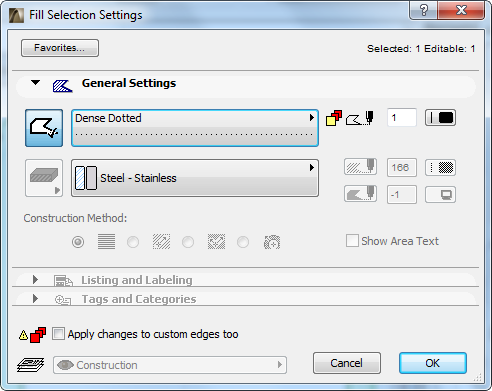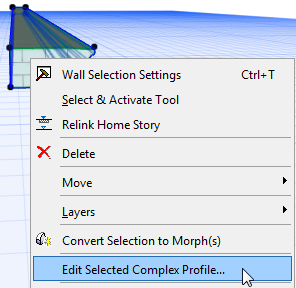
Creating or Editing a Complex Profile Element
Use Profile Manager to create or edit a complex profile element.
To open the Profile Manager, do one of the following:
•Choose Design > Complex Profiles > Profile Manager
•Choose Options > Element Attributes > Profile Manager
•Select an existing Complex Profile Element, then click Edit Selected Complex Profile from the context menu.

The Profile Manager opens.
For details on all controls, see Profile Manager Dialog Box.
Edit Existing Profile
To edit an existing profile, choose one from the pop-up. Notice the icon that indicates whether the selected profile contains a core component, or not. (In this image, the icon indicates “No Core.”)
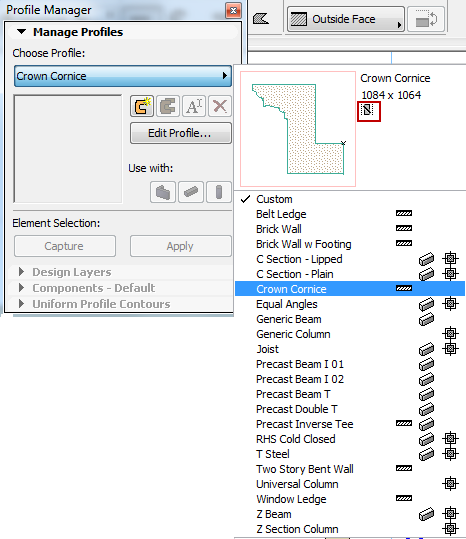
For information on Profile components, see Components Panel.
To create a new profile, click the New button.
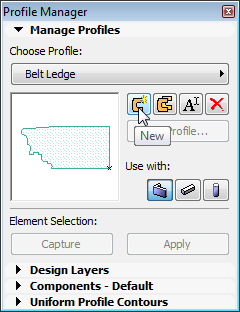
In the appearing Add Profile dialog box, give the new Profile a name.
To create a new profile based on an existing profile: Choose an existing profile, then click Duplicate.
•In the appearing Duplicate Profile dialog box, give the new Profile a name.
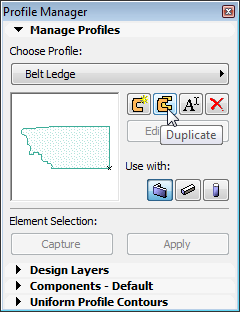
Capture Selected Element for New Profile
•To create a new profile using the shape of a selected element in the active model window, click the Capture button in the Profile Manager, or use Design > Complex Profiles > Capture Profile of Selection
•The new profile is called “Custom”.
•After editing a Custom profile in the Profile Editor window, make sure you click Store Profile to save your edits and name the new Profile, before closing the window. Or apply the Custom to any Wall, Beam or Column to apply a one-off custom to that element.
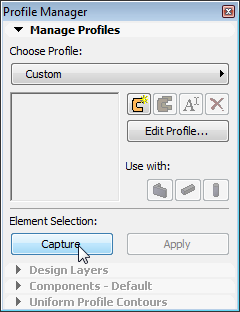
Whenever you create a new Profile or open an existing Profile for editing, the Profile Editor window opens. In this window you will draw or edit the cross-section of the profile element, using the 2D drawing tools that are available.
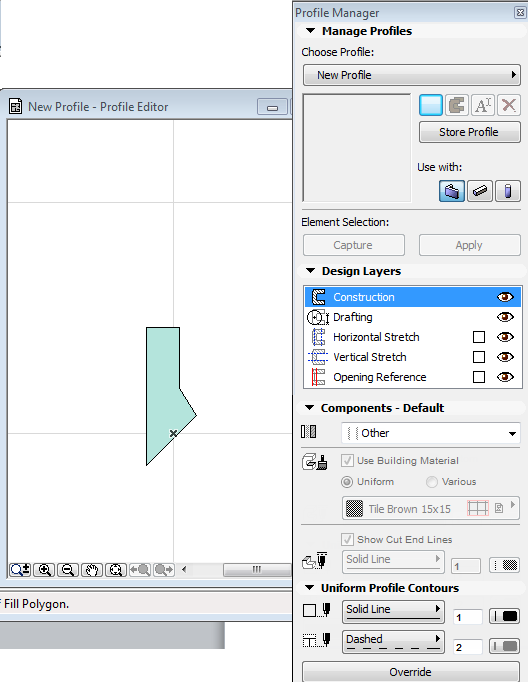
Use the Fill tool to draw the cross-section of the complex profile, with the usual 2D techniques, to achieve the desired shape.
Define or Edit Profile Component Fill
Select a fill component from the Profile Editor window to edit it.
Your cross-sectional profile can contain multiple fill shapes (components); they will all be saved together as a single profile.
Use the Fill Tool to draw and edit the shape. In Fill Selection Settings, you can then assign its Building Material and set a cut line/pen (or turn it off).
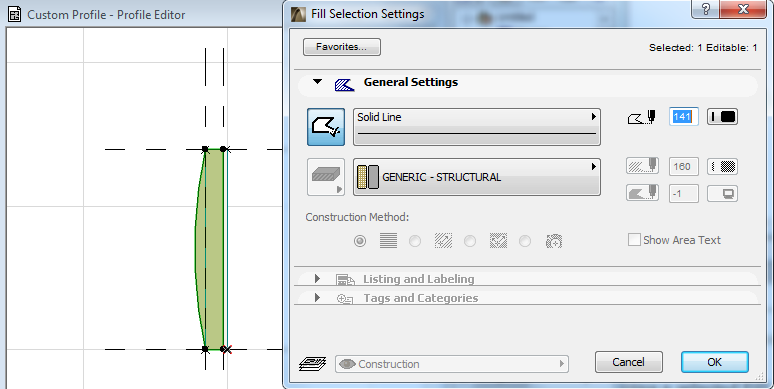
You can customize any edge surface of a Profile element.
See Apply Custom Surface or Line to Profile Edge.
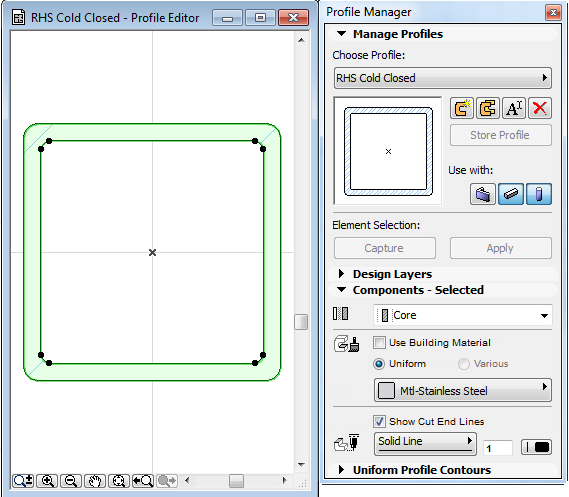
The Components section of Profile Manager lets you define the Profile component’s structure definition (e.g. Core or Finish). Also, you can override the Profile component’s surface, and set its end line type (or turn off cut end lines altogether).
See Components Panel.
Profile Origin in Profile Editor Window
The Origin shown in the Profile Editor window is a significant reference point: if the complex element is a Wall, the origin represents the location of the Wall’s reference line. In case of a Column or Beam, the origin represents the location of the element’s axis. You cannot move this origin, but you can move the profile shape so that it correctly positioned with respect to the origin.
Only hotspots and shapes drawn with the Fill tool in the Profile Editor window will be part of the saved profile. Other 2D elements added to the Profile Editor window (lines, dimensioning, etc.) can be used as local drafting aids, but will have no effect on the final appearance of the complex profile when placed into the model. (These drafting aids are located on the “Drafting” Design Layer.)
The Design Layers section of Profile Manager contains layer settings that apply in the Profile Editor window only.
See Design Layers Panel.
Store and Save Profiles
After you edit a named Profile, you are required to confirm and store these changes. Either click the Store Profile button in the Profile Manager, close the Editor window and choose “Store” or switch to another profile and choose “Store” from the appearing dialogue.
When editing a Custom profile, no warnings will be given and changes are automatically stored within the “custom”.
Note: Custom profiles are not directly assigned to elements from the Profile Manager, but locally stored in the element.
However, to permanently store a custom, click “Store Profile:” a dialogue will appear to name and store the profile.
Apply Custom Surface or Line to Profile Edge
By default, all sides of a Profile element use the surface defined in its Building Material.
However, you can apply a different surface or line type to any edge of any Profile component.
1.Select a profile component fill in the Profile Editor window.
2.Choose the Custom Edge Settings pet palette icon.
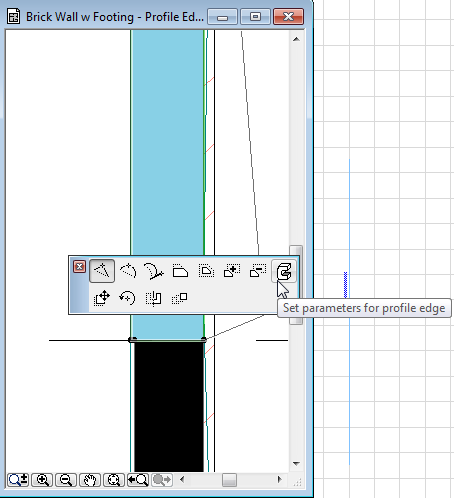
3.Edit the controls in the appearing Custom Edge Settings dialog box.
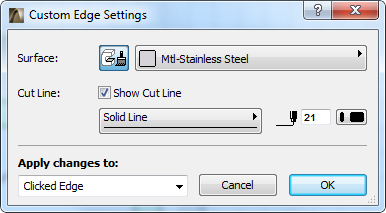
To switch off the contour line of the selected edge, uncheck Show Cut Line.
These custom edge settings will be applied to the edge from which you opened the Pet Palette (Clicked Edge), or to all edges. If needed, you can apply a different custom edge surface/contour line to each individual edge.
If you are using a custom line type or pen for any edge(s) of the profile, the Fill Selection Settings will indicate this with a custom icon:
